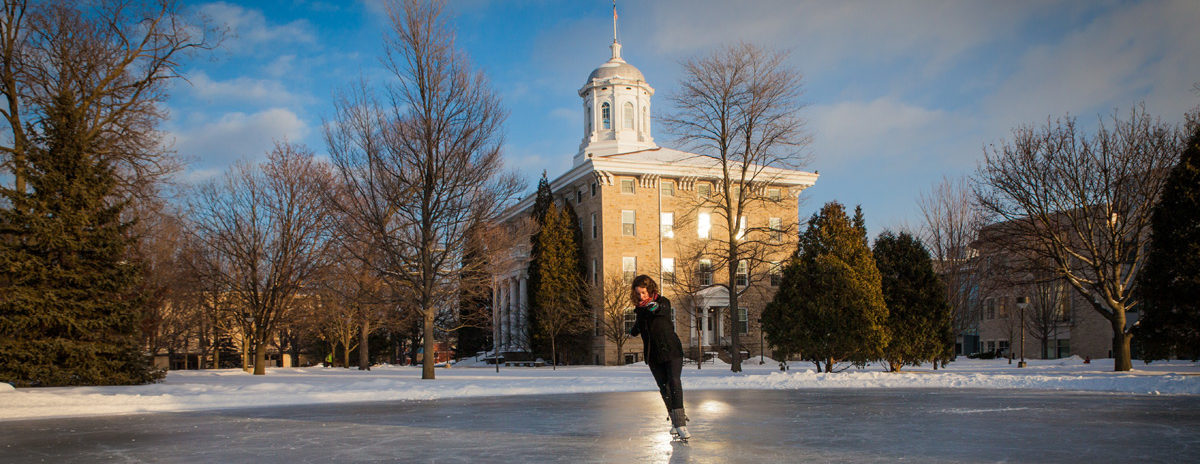Founded in 1847 as an institution open to men and women of immigrant and indigenous backgrounds, Lawrence has, from the beginning, been a forward-thinking place focused on creating a welcome and supportive community for all of its students to thrive and succeed.
We have learned, however, that—despite that auspicious start—Lawrence still has more work to do so all members of the Lawrence family feel equally at home in our intellectual community.
Like we have seen at many colleges around the country this academic year, the Lawrence community has been engaged in broad-ranging, deep and often intense conversations about race on campus.
At the end of November, right before the end of fall term, a group of students met with President Mark Burstein and our dean of students, to express their own experiences, anger, and frustrations, as well as a letter of demands and concerns for the institution, many of which are thematically similar to what we are seeing on other campuses across the country, but more pertinent to the Lawrence community and its needs.
Broadly, our students—in line with our faculty and staff—are seeking a more inclusive and racially sensitive campus climate, and a commitment from the administration to acknowledge our shortcomings on that front while addressing proactively changes to our campus culture. Many of the demands parallel projects and initiatives that different parts of the institution have been working on for some time.
However, as the president stated in a letter to the community right before students returned from break: “A defining goal for Lawrence and certainly for me is to create a learning environment in which all students, as well as faculty and staff, can thrive. This fall’s events indicate that we have not moved quickly enough towards this goal.”
Right before we returned from the winter break, President Burstein shared with the Lawrence community a “Framework for a More Inclusive Lawrence,” which resulted from the work of shared governance among students, faculty and staff in the five weeks since the fall term had ended. The framework focuses on five principal areas that will be the focus for our efforts in the coming months:
- Learning
- Broaden our Ethnic Studies program to include a new emphasis on the African American experience, and to free current resources to teach additional courses in Native culture and American Latino/Latina literature;
- An assessment of the selection of works for inclusion in Freshman Studies, the foundation of the Lawrence intellectual experience;
- Ongoing diversity and inclusion training and workshops for all employees and students;
- Resources
- Coinciding with a recommendation from our 2010 Strategic Plan, we will hire an additional staff person to support our Assistant Dean of Multicultural Affairs;
- Explore new locations for our Diversity Center;
- Hire an Associate Dean of the Faculty and Vice President for Diversity and Inclusion;
- Increase need-based financial aid support for study abroad, which had already been approved by our board of trustees and administration;
- Safety
- Develop a bias-incident reporting capability to our current student safety app.
- Develop clearer and smoother grievance procedures;
- Coordinate with the City of Appleton—mayor’s office and police department—to ensure that bias-related incidents that occur in near- or off-campus areas are fully investigated;
- Enhanced Diversity
- Increase the diversity of our faculty and staff at Lawrence, which has already been fully underway. In 2013 and 2014, 8% of new hires were employees of color. In 2015, 28% of new hires were employees of color. We have already made substantial progress with gender diversity;
- Ensure a broader representation in our Board of Trustees and Alumni Association Board;
- Recruit and retain a diverse student population. The past ten years have seen the most significant sustained growth in enrollment of students of color in our history, but there is more work to do;
- Dialogue Across Difference
- Engage with organizations like The Sustained Dialogue Institute, to help us further foster an environment where students, faculty, and staff can safely and constructively explore uncomfortable and controversial subject matter together.
For three hours on Thursday evening, January 7, we held a community gathering in the Warch Campus Center with ten information stations staffed by members of the Lawrence community responsible for managing these initiatives, much like a college fair. Attendance was extraordinary as students, faculty, and staff moved from station to station asking questions, posing challenges, sparking ideas, critically problem-solving.
Media were not permitted to attend the event, as this is a matter we wanted to discuss first “among the family of Lawrentians” without the distraction of lights and cameras. We did, however, invite them in after the event was completed, so they could conduct interviews and continue their reporting on the issue. Below are links to three of the stories—one newspaper, two television—that ran January 8.
LU Campus Responds to Inclusion Plans (Post-Crescent Media)
Lawrence University students attend fair on diversity initiatives (WBAY ABC 2)
Lawrence University continues conversation on diversity (WLUK Fox 11 News)
We know we have much work to do. But with so many members of the Lawrence community committed to accelerating this important work, we know we will evolve through this process into an even better Lawrence.
We are putting the finishing touches on a new Diversity & Inclusion website that will launch next week, which will include resources for the Lawrence community and those who wish to learn more about our history and our future as it pertains to this important issue.

